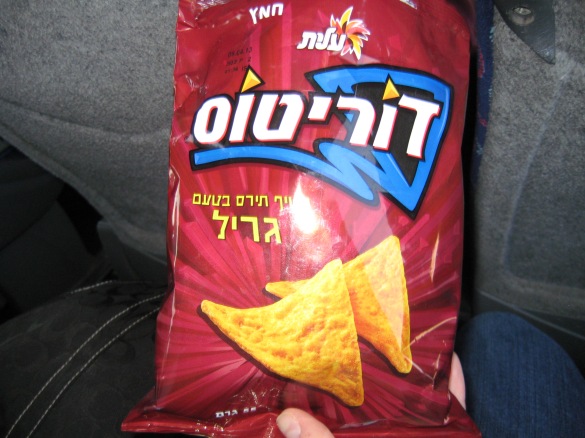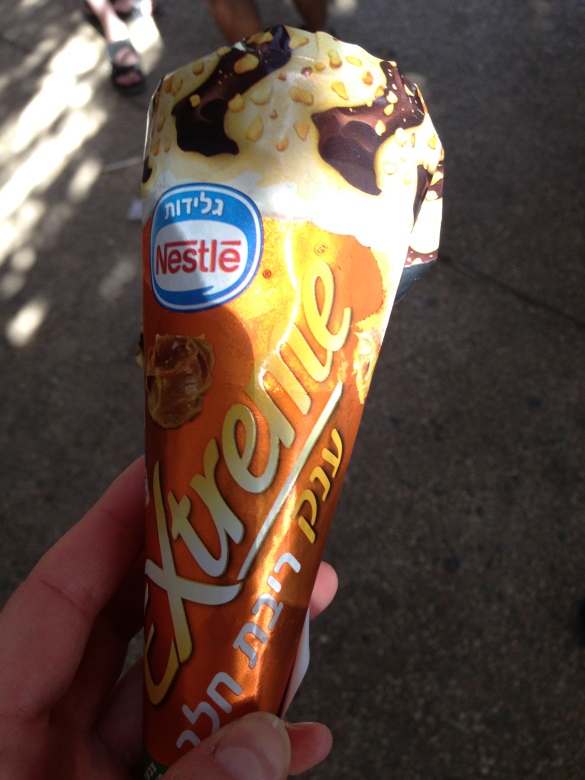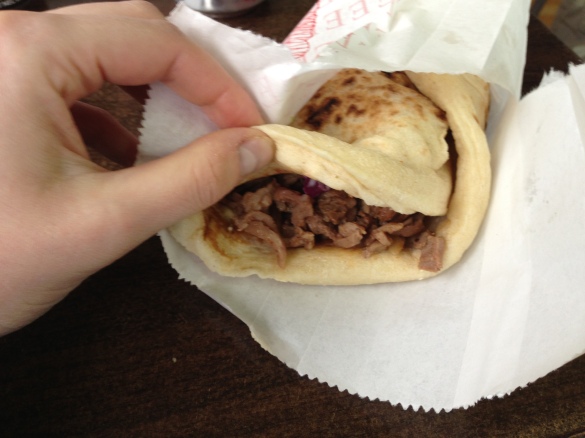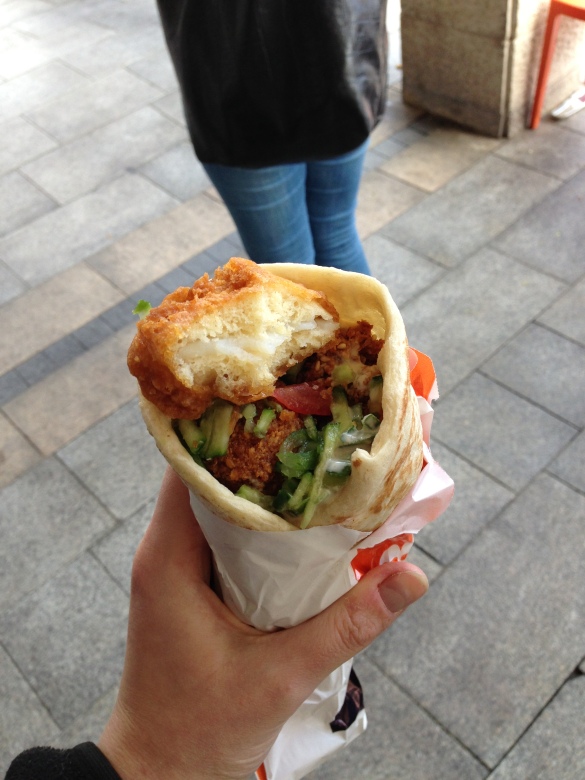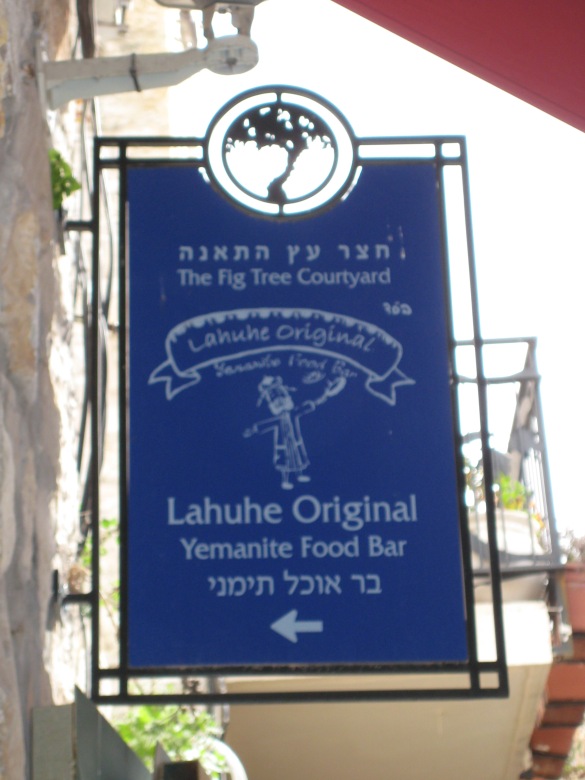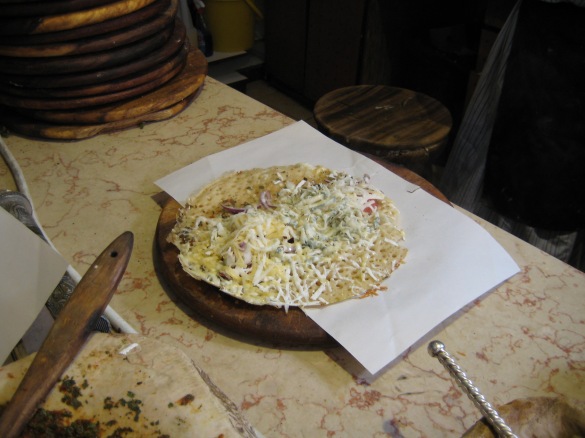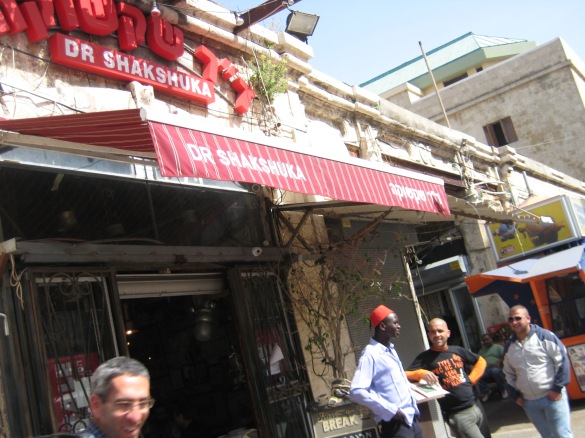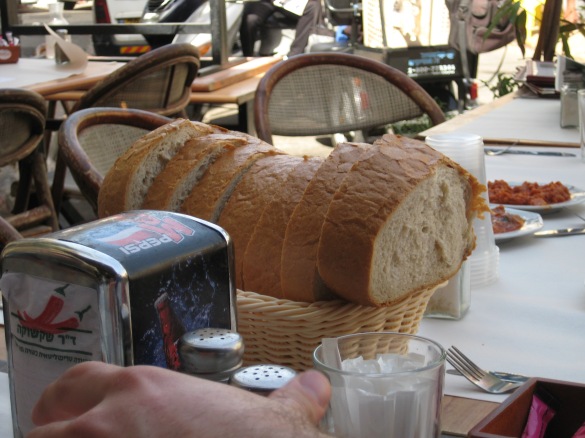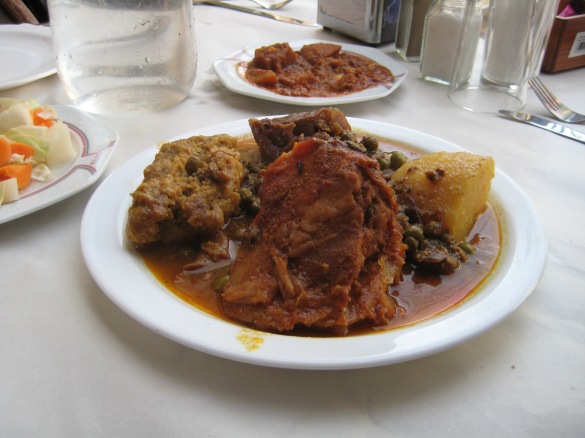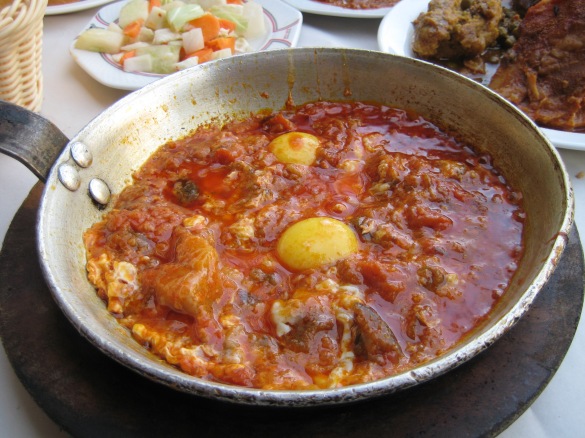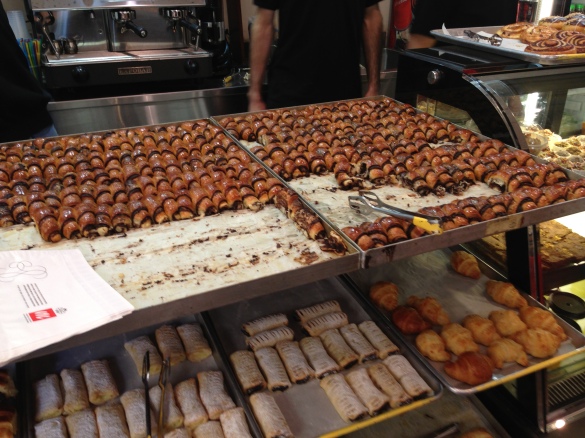It’s pretty understandable that a city of millions could create a diverse food ecosystem, ranging from the micro-focused tiny shops like Bantam Bagels or Potatopia, to the restaurant empires of Danny Meyer and Mario Batali. There’s a lot of middle ground between those two poles, and I’ll admit the food nerd in me enjoys discovering the oft understated links between restaurants, especially when I find a relationship between two places I like. For example, did you know that The Smith is owned by Corner Table Restaurants, the same group behind the Greenwich Village restaurant Jane? Or that the mini-chain Five Napkin Burger was born out of the popularity of the eponymous dish on the menu at the Upper West Side’s Nice Matin? Sometimes connecting the dining dots in NYC reads like an exercise in genealogy.
I bring this up because of a recent dinner at Fulton, a seafood restaurant in my neighborhood. It turns out the restaurant is owned by Joe Guerrera, the man behind the Citarella gourmet markets. In fact, Fulton is right around the corner from the UES location, sitting just off 75th and 3rd. With such proximity to the famed seafood market (not to mention a name that nods to an even more storied market downtown), a fish-forward dinner at Fulton seemed like a no-brainer for my Baltimorean parents and their genetically brine-inclined daughter.
First Impressions:
Fulton has a classic, somewhat old-fashioned feel to it, evoking the stately taverns and older steakhouses I’ve dined at in New York. It was an unusually cold fall evening, so the heat lamps were on throughout the outdoor seating. Inside the decor is a mix of exposed brick, dark wood, and white walls decorated with charcoal scenes of fish markets. A sizable bar takes up a third of the restaurant as you enter; the rest of the space furnished with wooden two and four-tops and a banquet lining the back wall. My father lamented the modern trend of foregoing tablecloths, which Fulton ascribes to. I agree that it can add an extra bit of class to a meal, but a tablecloth can also reveal the unfortunate consequences of my klutzy dining habits (providing me with any sort of crusty bread yields a Pollock-esque scattering of crumbs around my butter plate).
The staff at Fulton is very friendly, from the bussers constantly refilling our water glasses, to the waiters who happily answered our questions and gave advice on all three courses of our dinner. I was especially impressed when a passing server, noticing that my father had accidentally dropped his napkin on the floor, picked up the napkin immediately, and instead of just handing it back to my dad, gave him a brand new clean one as a replacement. It’s those small moments of thoughtful considerate behavior that really speak to the quality of a restaurant’s staff.
The Food:
Our meal started with an ample bread “basket” (aka tin bucket), filled with a variety of rolls and seeded mini-baguettes and served with a small bowl of olive oil. A sampler at heart, I always appreciate being given multiple bread options, and both the rolls and the olive oil were fresh (presumably sourced from Citarella next door).
Although I occasionally hem and haw over several enticing menu options, at Fulton I quickly zeroed in on my order. My mother and I split the Brussel Leaf Salad to start, while my father opted out of an appetizer. For mains, my mother chose the Whole Branzino, my father the Fulton Burger, and I got the Black Sea Bass. Never one to object to some additional sides, we selected the Lobster Hash and the Crab Mashed Potatoes, on the suggestion of our server. To round out our healthy meal, we all split the Cookie Monster dessert.
I’m not sure where I stand on split appetizer plating. On the one hand, it’s very considerate of the restaurant to divide the appetizer onto separate plates and ostensibly remove the issue of each person getting an equal portion. On the other hand, however, in some cases this leads to a modified dining experience, as ingredients are not always apportioned correctly. Unfortunately, the Brussel Leaf Salad (hazelnut-crusted goat cheese, caramelized pear) falls into the latter category. The dish was very artfully plated in distinct sections, the shredded brussels sprouts leaves in a small pile that was dusted with chopped hazelnuts, with a small globe of nut-encrusted goat cheese and a fan of caramelized pear slices on the side. While for the most part it was a fair split, the share of chopped hazelnuts was way more heavily weighted to my mother’s portion, and she was kind enough to switch with me, knowing I’m more of a hazelnut fan than she is. I found the salad very pretty to look at, but I’m one of those people who is always frustrated when served a salad that necessitates the diner to finish putting it together. (Don’t give me a pile of lettuce with a barely sliced chicken breast an assorted ingredients on top — if I’m at a restaurant, I don’t think it’s an unreasonable expectation to have my salad come pre-tossed.) Since the ball of goat cheese arrived somewhat chilled, it required a good deal of dexterity to combine the brussels leaves, a bit of hazelnut, pear, and a slice of cheese and achieve the full flavor combination intended for the dish. I enjoyed the mix of textures, and although I found the brussels a little underdressed, I thought overall it was a satisfactory appetizer, if slightly overshadowed by the rest of my meal. I think if I went back to Fulton, I would just give in and go for a full on fish meal, choosing the scallop appetizer instead.
As the name implies, the Whole Branzino is usually served whole, complete with head and bones, but when my mother requested it pre-guillotined, our waiter offered to serve it already filleted. The dish came with two small bowls, one filled with lemon slices, and the other with a seasoning blend (my mom chose not to use it, so I’m not sure what it was composed of). The bite I had was well-cooked and elegantly plated, but my mother found it a little plain (perhaps our server should have told us how to use the side-seasonings), and in need of some sort of greenery. Our decision to have solely starchy sides probably didn’t help matters, but at least she had some of the salad that came with my father’s entree.
Fulton actually has two items called “burger” on its menu — the traditional beef-based cheeseburger, and the eponymous Fulton Burger (swordfish, black cod, sea trout), a patty of diced fish served hamburger style on a brioche bun with greens and a citrus aioli. I’d never heard of this type of sandwich before, but it made sense considering the meatier texture of swordfish as a foundation. The cod and trout kept the patty from being too dense, and the bit I had reminded me of a crab cake (the broiled, not fried kind). There was a strong fish flavor that made sure you knew this was not your average beef-alternative burger, and I thought rounding the dish out with a small salad rather than fries helped to maintain the lighter, more refined aesthetic.
My gut feeling about the merits of the Black Sea Bass (gnocchi, asparagus, mushrooms) ended up working very much in my gut’s favor. I chose it largely because of the accompanying sides — three of my menu compulsions, especially the gnocchi. It ended up exceeding my expectations — two tender, flaky fillets of bass with crispy skins on top, sitting on a bed of petite sliced button mushrooms that were rich and savory, along with starchy nuggets of gnocchi and sliced asparagus. Everything was cooked to the perfect texture: just a bit of snap to the asparagus, wonderfully tender mushrooms, buttery fish flesh that melted on my tongue, and the chewy but far from rubbery feel of the pasta. There was a light but milky sauce on the bottom of the dish which tied it all together. From the picture it might seem like accompaniments were a little sparse, but actually I thought the proportions of the dish kept the fish as the center of attention while providing some highlights with just the right amount of sides.
Speaking of sides, I couldn’t help but be reminded of my steakhouse adventures at Peter Luger. It seems like Fulton ascribes to the classic steakhouse dinner model where your side orders add no nutritional value to your meal, but God are they decadent and worth a place at the table. Rich doesn’t even begin to describe the Lobster Hash, a mish-mash of claw and tail meat, sliced baby potatoes, pearl onions and gravy covered in a bearnaise sauce. It verges on ridiculous to relegate this to a side dish — it easily could have been an entree by itself. As with the rest of the seafood, the lobster was unbelievably fresh, combined with the gravy and bearnaise I couldn’t help but think of a creamy lobster bisque. I generally find whole pearl onions to be a bit overpowering, but in this case their sharp flavor helped to brighten the heaviness of the other components.
The Crab Mashed Potatoes were a more subtle side dish. Mashed has always been my least favorite potato preparation (I miss the crunch of the skin you get in roasted, smashed, or french-fried), but Fulton gets props for how smooth and creamy our dish was (I don’t want to think about the amount of butter in them). The crab flavoring was very mild, to the point that my mother struggled to taste it. I think it definitely could have been more strongly crabby, but the faint hints of crab and old-bay flavors were enough variety to elevate Fulton’s take on mashed potatoes above the traditional preparation for me.

The Cookie Monster — as its namesake warns, definitely a “sometimes food,” but a damn delicious one at that.
Now with a name like the Cookie Monster (Warm Chocolate Chip Cookie, Vanilla, Chocolate, Strawberry Ice Cream), you might think that I was insistent from the get-go about ordering this dessert. But please let the record show that my parents were the driving forces behind this choice, trumpeting said dish over the pedestrian Molten Chocolate Cake or Triple Layer Chocolate Fudge Cake (either of which I would have been more than happy with). But as luck would have it, the Cookie Monster is pretty damn appetizing, too. It took a while to arrive — to the point where we stopped our waiter to check on the status — but it proved worth the wait when the dish showed up with a clearly fresh-baked cookie on it. The dessert was plated with a soft, gooey and warm chocolate chip cookie base, then covered in three scoops of ice cream, a mountain of whipped cream and hot fudge, a tuille of white chocolate, and a scattering of fresh raspberries on the side. It was a marvelous contrast of temperatures and textures, like any good sundae should be. Granted, it was nothing too outrageous or inventive, but there’s a wonderful nostalgia to the good ol’ Tollhouse familiarity of the cookie and the fresh ice cream that was not too icy or soft, solid in execution if not of the showstopping quality of some of my recent gelato forays. Most importantly, did we clean that plate? Yes, yes we did. For all the quibbling over richness of chocolate and butterfat, truthfully, my parents and I just straight up love cookies and ice cream, and if you’re down wiith that, then Fulton will happily oblige.
Final Thoughts:
Overall, Fulton seems to be the sort of restaurant where a little background info or recommendations is the key to a good meal. The ties to Citarella (visible to the point of the doggy-bags — see below) make sure the quality of raw materials is high, but a standout dish is more than just the individual components. Go for items that have more of an obvious chef’s hand in them — the ones with a more visible flavor profile, more built-out accompaniments, or some sort of interesting twist in conception (such as the Fulton Burger). The truth is, you’re going to be better off getting a whole branzino at a great Italian restaurant than here. If you’re feeling a little more adventurous, hop a subway downtown, but with its good service, comforting desserts, and fresh ingredients from next door, Fulton provides a nice, slightly upscale neighborhood restaurant for the seafood-inclined, and is worth a visit if you’re sticking around the UES.
Fulton
205 E. 75th St (between 2nd and 3rd)

















































